FUNERAL FEAST
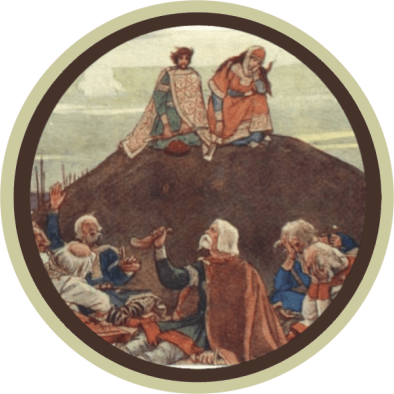
Bronze Age Greece
The Mycenaeans practiced a burial of the dead, and did so consistently. The body of the deceased was prepared to lie in state, followed by a procession to the resting place, a single grave or a family tomb. Processions and ritual laments are depicted on burial chests (larnakes) from Tanagra. Grave goods such as jewelry, weapons, and vessels were arranged around the body on the floor of the tomb. Graveside rituals included libations and a meal, since food and broken cups are also found at tombs.
In Iliad Book 23 dead Patroclus appears in Achilles' dream, begging him to hold his funeral soon so that his soul can enter the land of the dead. The next day, after an elaborate ceremony in which Achilles sacrifices the Achaeans' twelve Trojan captives, he prays for assistance from the winds and lights Patroclus' funeral pyre.
The day after, following the burial of Patroclus' bones, Achilles holds a series of competitions in Patroclus' honor. Marvelous prizes are offered, and both the commanders and the soldiers compete. The events include boxing, wrestling, archery, and a chariot race, which Diomedes wins with some help from Athena. Those competitions are very similar to the East Slavic Trizna traditions.
Ancient Greece
At the time of the funeral, offerings were made to the deceased by only a relative and a lover. The choai or libation and the haimacouria or blood propitiation were two types of offerings. The mourner first dedicated a lock of hair, along with choai, which were libations of honey, milk, water, wine, perfumes, and oils mixed in varying amounts. A prayer then followed these libations. Then came the enagismata, which were offerings to the dead that included milk, honey, water, wine, celery, pelanon (a mixture of meal, honey, and oil), and kollyba (the first fruits of the crops and dried fresh fruits).
Once the burial was complete, the house and household objects were thoroughly cleansed with seawater and hyssop, and the women most closely related to the dead took part in the ritual washing in clean water. Afterwards, there was a funeral feast called the perideipnon. The dead man was the host, and this feast was a sign of gratitude towards those who took part in burying him.
Ancient Rome
Nine days after the disposal of the body, by burial or cremation, a feast was given (cena novendialis) and a libation poured over the grave or the ashes. Since most Romans were cremated, the ashes typically were collected in an urn and placed in a niche in a collective tomb called a columbarium (literally "dovecote" from columb meaning "dove"). During this nine-day period, the house was considered to be tainted, funesta, and was hung with Taxus baccata or Mediterranean Cypress branches to warn passersby. At the end of the period, the house was swept out to symbolically purge it of the taint of death.
Hittites
When someone dies, everyone (adults and young) take away their drinking-straw and begin to wail. Death is ritualised by killing an ox and possibly also a billy-goat. The body of the deceased is burnt on the second day after death. On the third day, the bones are removed from the pyre and taken to the tomb (É.NA) and the rite of conciliation (lilauwar) is performed. From this moment on, the deceased was represented by a statue. During the remaining days of the ritual, the rites had the aim of appeasing the soul (in particular with the drinking-ceremony "eku-") and ensuring it a privileged place in the afterlife. The last day sealed the soul's separation from the world of the living. Other rituals surrounding the deceased or soul included the burning (with use of oak wood) of wooden and alive lahanza birds (ducks), then being awake for whole night and finally "drinking" the soul of the deceased with previously offered loaves of bread[1].
Pre-Zoroastrian Persia
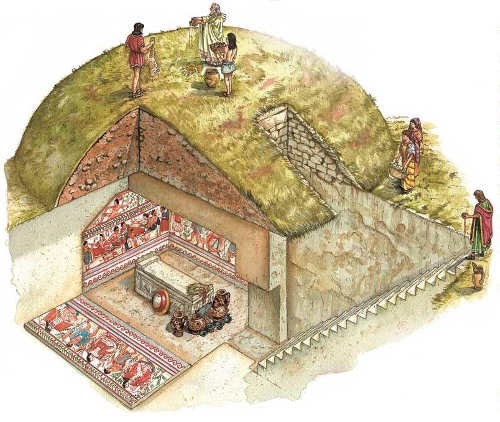
After the person died, it was believed that their urvan would walk the earth for three days during which the person's family would offer prayers and animal sacrifices to help the urvan on its way and guard it against evil spirits. After the urvan descended into the underworld, the only way he or she could be cared for was through regular offerings given by the descendants or heir of the deceased. Most of the offerings were made during the first year but could continue for up to thirty years after the person died.
Each year on the last days of the year, called Hamaspathmaedaya or All Souls, the family of the dead person would make offerings to sustain their ancestor. Burial was fairly simple and consisted of burial in barrows (or mounds) or at the bottoms of deep shafts for tribal chiefs, the royalty of the day. People of lesser status were buried in plain graves in the earth.
Germany
The wake in German-speaking countries is mostly religiously motivated and shows great regional differences. Until the end of the 19th century (in rural areas even longer) it was customary to solemnly lay the deceased in one's own room in the house on the death bed or in an open coffin.
The relatives, acquaintances and friends were given the opportunity to personally say goodbye to the deceased and to pray together with the relatives for the salvation of his soul. The gathering for common prayer during the day was not yet called a wake. Rather, wake meant "night watch over the corpse" (JG Krünitz and the Brothers Grimm).
It was mostly held by people who were particularly close to the deceased and lasted all night. These "guards" had the character of an informal get-together in which the achievements of the deceased were appreciated and events from his life were told. Food and drinks were served, with excessive alcohol with all the unpleasant side effects not infrequently occurring at an advanced hour: "Poor friend! sleep would have been healthier for you than such a wake to death."
A corpse layed pale as snow and the guard of the dead drank tirelessly. Sometimes up to thirty people sat crammed together in the overheated room in which the dead man was laid out. Above all, the sanitary problems eventually led to saying goodbye to the deceased more and more in the mortuary chapels and morgues. The intimate character of the wake, as it was taken for granted in the 19th century, was lost.
Sweden
Before the 19th century a funeral party is described with food being served both day and night and that people immediately sat at the table. The presence of food in the tradition contributes to the fact that the burial beer (which during the 19th century replaced the corpse) is in many ways connected to the corpse and has had a historically important factor for the understanding of the dead body. Depending on where in the country one was, the funeral beer could be held the day before the funeral, which has the custom of being reminiscent of 17th-century corpses. In addition to treats as in the 17th century custom, there was also consumption of beer, which contributed to the party sometimes becoming too loose.

In addition to the purpose of gilding the festivity, the food was a symbol of invitation. For pure formalities, visitors to the funeral home would donate food gifts to the mourning house to show compassion and financial support for the mourners. It was common for farmers in the 16th to 18th century to visit the mourning house to leave milk or a harvest and then look at the corpse.
The Gastkringla (guest pretzel) also called Sorgering were large saffron pretzels of wheat, in which raisins were stuck, which each guest was allowed to take home. The size of Gastkringla depended on the social status of the mourning house as well as its mourning status. At times, the pretzel could be described so large that it could be conveniently hung over the shoulder on the way home and thus contribute to general knowledge about someone passing away.
Norway
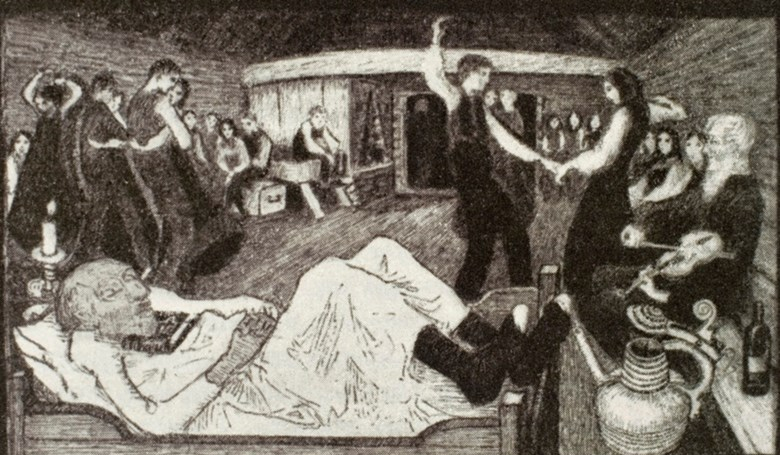
The folklore examiner Kjell Bondevik (1901 – 1983) claims in Norsk Allkunnebok that the purpose of the bodyguard (vake, wake) was to save the body from evil spirits. The things were positive during the ward, with both drinking and dancing. This is known from the painter Nikolai Astrup's painting "Likdansen" to which he also wrote a text with the same name.
In the event of death, there may also be several occasions where relatives and acquaintances have the opportunity to see the deceased at the hospital, at home or in the burial chapel before the funeral procession. Some leave the coffin open during the funeral ceremony.
At the funeral feast of Harald Bluetooth, Jarl Sigvaldi sweared an oath on his father's memory to go to Norway and kill or drive away Haakon Jarl.
Poland
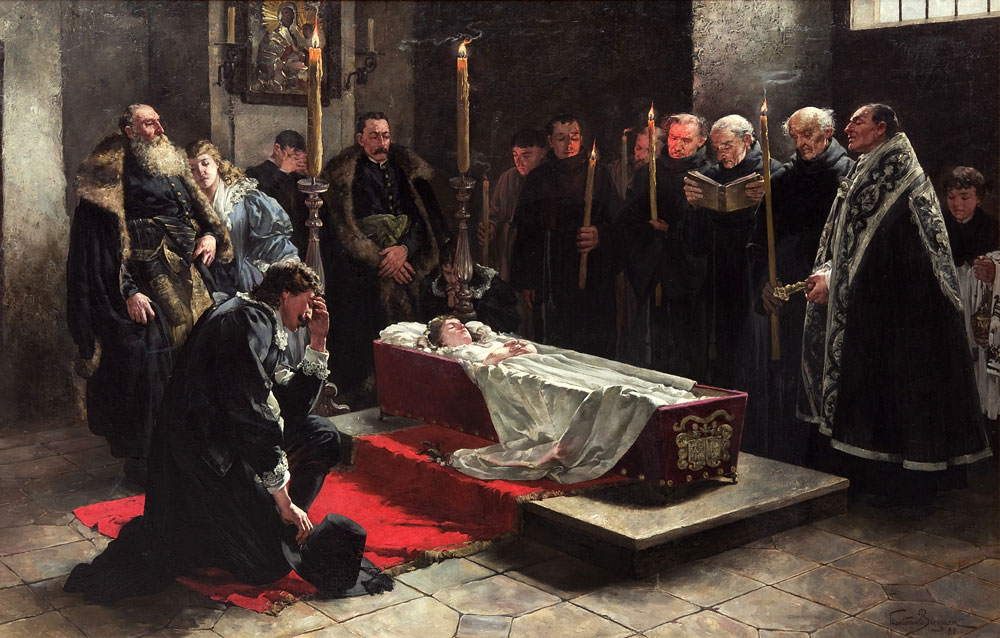
In some traditional rural areas, the wake (czuwanie) takes place in the house of the deceased or their relatives. The body lies in state for three days in the house. The funeral usually takes place on the third day. Family, neighbors and friends gather and pray during the day and night on those three days and nights.
There are usually three stages in the funeral ceremony (ceremonia pogrzebowa, pogrzeb): the wake (czuwanie), then the body is carried by procession (usually on foot) or people drive in their own cars to the church or cemetery chapel for mass, and another procession by foot to the gravesite. After the funeral, families gather for a post-funeral get-together (stypa). It can be at the family home, or at a function hall.
East Slavs
In the Tale of Bygone Years it is said that if someone died the tryza (the funeral feast) was done over the body and then the body was placed over the pile of wood and then burned.
Wales
Gwylnos was the traditional method of commemorating the dead, through celebration rather than sorrow and mourning. Card playing (sometimes on the coffin of the dead body) and drinking beer took place during this ceremony. A similar practice is found in Ireland (wake). It is also referred to as "the Watch of the Dead". Hugh Evans states: "It is very difficult to explain the plight of the old Welsh in the presence of the dead, who are so superstitious with regard to the appearance of the spirits of the deceased.".
Women used to go to the house of a rather sick person to "weep", which is to watch the body. It is interesting to note that "wake" in English also includes this aspect: "to watch or guard". With the rise of Methodist influence in Wales, the vigil was devastated and turned into a purely religious occasion, and its original meaning was lost.
Lithuania
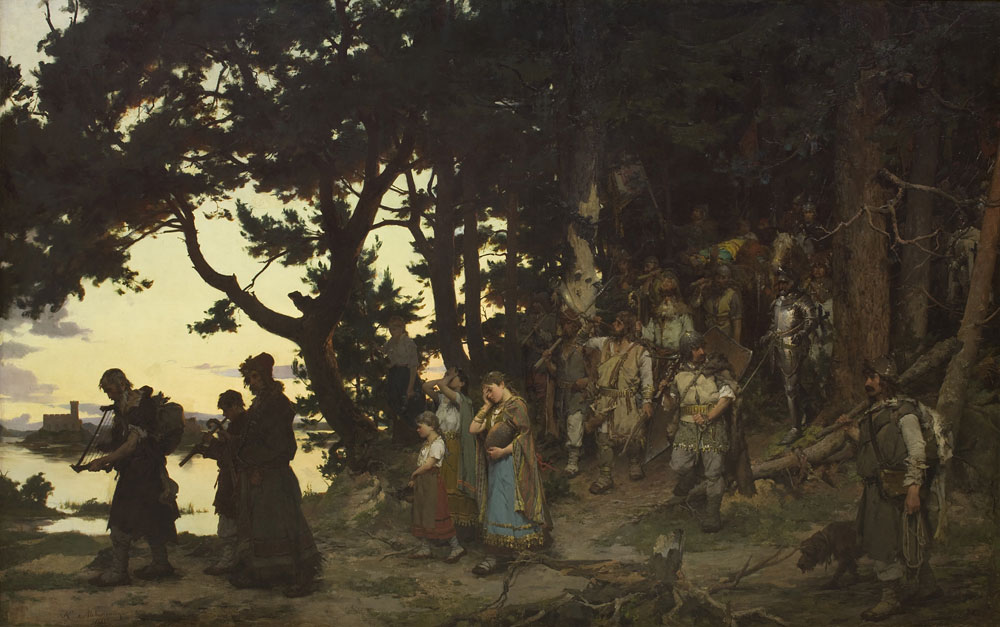
When someone passed away, there was a three-day wake at the deceased’s home. They dressed the deceased in nice clothing, lit candles, and watched over them. Mourners brought even numbers of flowers and paid their respects to the deceased. Women, mainly in Southern Lithuania, brought bread loaves to give to beggars and ask them to pray for the deceased’s soul. Bringing bread was thought to protect that person from harm and help connect them with the deceased’s soul.
At a traditional Lithuanian funeral service, you would hear a lot of singing, chanting, and praying. It was a community event, and they also hired professional mourners to attend the funeral and weep. Women usually wore white head scarves at the funeral.
Some families choose cremation, but burial is still the most popular funeral arrangement. After the funeral, everyone gathers for a post-funeral reception to eat and share memories of the deceased. Often, everyone gathers to remember them on significant days, such as the deceased’s birthday and their death anniversary.
Old Prussians
The Voyages of Ohthere and Wulfstan (in Anglo-Saxon) describes a voyage by a Norseman called Wulfstan to the land of the Old Prussians in late ninth century, to the area around Elbing. He describes their funeral customs:
"There is also this custom with the Estonians (Prussians in Truso), that when anyone dies the corpse continues unburnt with the relatives and friends for at least a month, sometimes two; and the bodies of kings and illustrious men, according to their respective wealth, lie sometimes even for half a year before the corpse is burned, and the body continues above ground in the house, during which time drinking and sports are prolonged till the day on which the body is consumed. Then, when it is carried to the funeral pile, the substance of the deceased, which remains after these drinking festivities and sports, is divided into five or six heaps; sometimes into more, according to the proportion of what he happens to be worth. These heaps are so disposed that the largest heap shall be about one mile from the town; and so gradually the smaller at lesser intervals, till all the wealth is divided, so that the least heap shall be nearest the town where the corpse lies."
"It is also an established custom with the Estonians that the dead bodies of every tribe or family shall be burned, and if any man findeth a single bone unconsumed, they shall be fined to a considerable amount. These Estonians also have the power of producing artificial cold; and it is thus the dead body continues so long above ground without putrefying, on which they produce this artificial cold; and, though a man should set two vessels full of ale or of water, they contrive that either shall be completely frozen over and it is equally the same in the summer as in the winter."
Conclusion
In Indo-European cultures it is a custom not to bury the body of a recently deceased person on the day of their death. The deceased should be guarded from evil spirits for at least 3 days during the time called a wake, until creamtion or a burial can occur. All guests should then be welcomed to participate in happy games or a funeral feast with plenty of food.
The names for a funeral feast in different Indo-European cultures are the following:
Greek: Perideipnon
Russian: Поминки (Pominki)
Polish: Stypa (from Latin "stipis")
East Slavic: Тризна (Trizna, Tryzna)
Welsh: Gwylnos
German: der Totenwache
Norse: Symbel, Sumbl
Swedish: Likvaka
Spanish: El velatorio
Article created on the 12th and 13th of Septemeber 2020.
